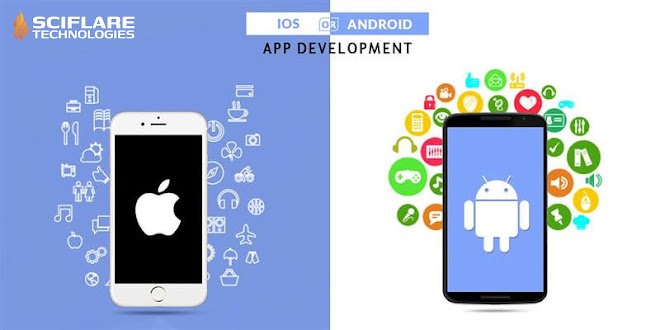iOS vs. Android: Titans of the Mobile OS Industry
The mobile landscape is a battlefield dominated by two giants: iOS and Android. These operating systems power billions of devices worldwide, shaping how we interact with information, entertainment, and communication. But with such fierce competition, understanding their strengths and weaknesses is crucial for developers and users alike. Let's delve into the world of iOS and Android, exploring their impact on the industry and the unique experiences they offer.
For IOS- iOS app development company
For Android- Android software development company
Android: The Open and Accessible Champion
Android, developed by Google, boasts an open-source foundation. This translates to greater flexibility for manufacturers, allowing them to customize the OS to fit their devices and cater to specific markets. This openness has fueled the incredible diversity of the Android ecosystem. From budget-friendly phones to high-end flagships, users have a vast array of choices based on their needs and budget.
The open-source nature also fosters a vibrant developer community. With lower barriers to entry compared to iOS, countless developers flock to Android, leading to a wider variety of apps available on the Google Play Store. This fosters innovation and niche applications that cater to specific user groups.
However, this openness comes with a double-edged sword. Fragmentation is a significant challenge for Android app development. With so many devices running different versions of the OS and sporting diverse hardware configurations, ensuring seamless performance across the board can be tricky. Additionally, the open nature makes Android devices more susceptible to malware due to the ease of sideloading apps from untrusted sources.
iOS: The Secure and Streamlined Powerhouse
Apple's iOS offers a stark contrast. It's a closed ecosystem, meaning Apple designs both the hardware and software for its iPhones and iPads. This tight control allows for a more streamlined and user-friendly experience. Every device running iOS gets the latest updates simultaneously, ensuring consistent performance and a smoother user experience across the board.
Furthermore, the closed nature enhances security. Apple meticulously reviews apps submitted to the App Store, maintaining stricter quality control compared to Google Play. This translates to a lower risk of encountering malware or poorly designed applications.
However, iOS's closed ecosystem comes at a cost. Customization is limited. Users have less control over how their device looks and feels compared to Android. Additionally, Apple's hardware can be more expensive than its Android counterparts, potentially limiting the reach of iOS devices to a more premium segment of the market.
The Battleground: A Tale of Two Approaches
Both iOS and Android cater to different user preferences. Here's a breakdown of how they compare in key areas:
- Price: Android offers a wider range of devices at various price points, making it more accessible to budget-conscious users. iOS devices typically fall in the premium segment.
- Customization: Android allows for greater user control over device aesthetics and functionality. iOS offers a more uniform experience with limited customization options.
- App Selection: Both platforms boast vast app libraries. However, Android might have a slight edge due to its lower entry barrier for developers.
- Security: iOS generally enjoys a reputation for tighter security due to its controlled app review process. Android is catching up, but the open-source nature makes it inherently more vulnerable.
- Updates: iOS devices receive timely updates for a longer duration, ensuring consistent performance across generations. Android updates can be slower and vary depending on the device manufacturer.
The Developer's Dilemma: Choosing the Right Platform
For developers, the choice of platform often depends on the target audience and the app's intended purpose. If reaching a broader audience and catering to diverse needs is the priority, then Android might be the better choice. However, if a premium experience with tighter security and control over the user experience is crucial, iOS might be the preferred platform.
The rise of cross-platform development frameworks like React Native and Flutter offers an enticing solution. These frameworks allow developers to build a single codebase that can be deployed on both Android and iOS, potentially saving time and resources.
Beyond Smartphones: The Expanding Landscape
The influence of iOS and Android extends beyond smartphones. They power tablets, smartwatches, and smart TVs, creating a connected ecosystem within each platform. This allows for seamless integration between devices and fosters a more unified user experience.
As the Internet of Things (IoT) continues to grow, both platforms are vying for dominance. Android boasts a head start with its open-source nature, potentially making it more adaptable to the diverse needs of IoT devices. However, iOS, with its focus on security and user experience, could also play a significant role in the secure and reliable functioning of smart homes and connected environments.
The Future: A Symbiotic Relationship?
Looking ahead, it's unlikely that one platform will completely dominate the other. Both iOS and Android continue to evolve and address user needs in their own unique ways. While competition drives innovation and benefits users, a potential future with greater interoperability between the platforms could be exciting.





Comments
Post a Comment